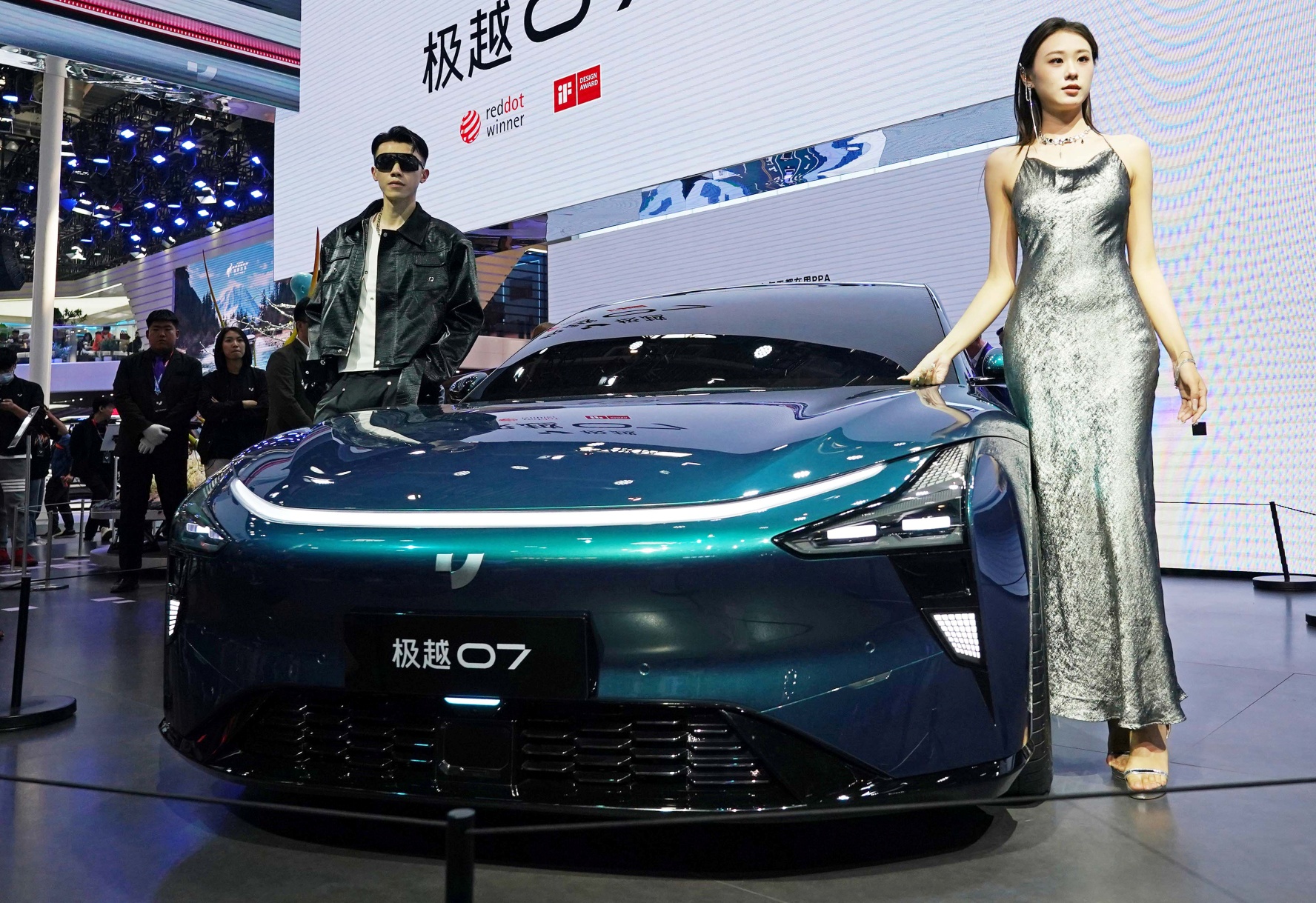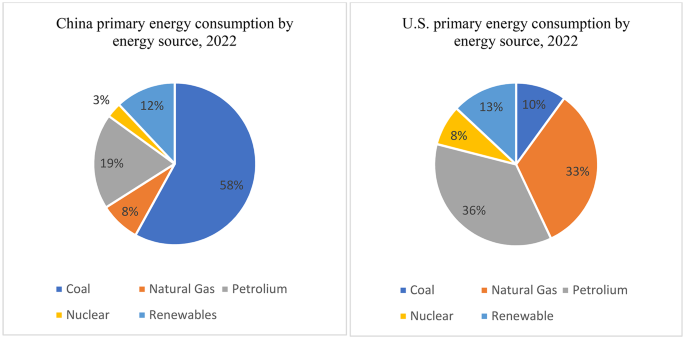












As the global clean energy landscape evolves, the United States faces significant challenges in launching a comprehensive 'green Marshall Plan' to counter China's growing influence in renewable technologies. Brian Deese, a former director of the National Economic Council, has proposed a multifaceted initiative aimed at providing technology transfer, finance, and trade support to developing countries. However, experts argue that the U.S. currently lacks the necessary capabilities and political will to implement such a plan effectively [8ba7e789].
Deese's vision includes a shift from tariffs to taxpayer-backed loans for clean energy buyers, aiming to diversify supply chains and reduce reliance on China. He believes that bipartisan support exists for this alternative to China's Belt and Road Initiative, which has been instrumental in China's strategy to enhance its diplomatic relationships and promote its green agenda [0c2a5d57].
The Biden administration has prioritized climate change, signing Executive Order 13990 in January 2021, and enacting the Inflation Reduction Act and Bipartisan Infrastructure Act, which together invested $239 billion in green technology. This effort has resulted in the creation of 140,000 new clean energy jobs and a 4.2% increase in sector employment in 2023 [6e8cf4bd].
However, as highlighted by Fred Teng in a recent opinion piece, the U.S. faces a credibility crisis regarding its climate leadership due to political volatility and the potential for a second Trump administration to withdraw from the Paris Agreement. The U.S. initially secured the Paris Agreement in 2015 under Obama but withdrew in 2017 under Trump, damaging its credibility on the global stage. Biden re-entered the agreement in 2021, but doubts about U.S. commitment persist [0459873c].
With Trump's recent re-election, there are growing concerns that he may again withdraw the U.S. from the Paris Agreement, creating a leadership vacuum in global climate efforts. This situation places additional pressure on China, the world's largest carbon emitter, to step up its role in climate leadership [9ad31787].
At the recent COP29 in Baku, Azerbaijan, China showcased its climate ambitions, advocating for developing nations and filling the leadership void left by the U.S. Zhao Yingmin, China's vice-minister of ecology, engaged with delegates, and a significant deal was reached for US$300 billion in funding by 2035. This highlights China's growing influence in global climate discussions, especially as it prepares for its emissions to peak in 2024 [fe66800f].
A recent study published in Nature highlights that both China and the U.S. are the largest consumers of fossil fuels, significantly impacting CO2 emissions and economic growth. The study covers the period from 1995 to 2020 and notes that technological innovation has a negative effect on fossil fuel energy use and intensity, while investments in electricity generation and transportation infrastructure have increased fossil fuel energy demand [8e1f22ee].
China relies heavily on coal for its energy needs, accounting for 60% of its energy mix in 2023, while it leads in solar and wind power development, building 64% of global capacity. In 2022, China was responsible for over 31% of global emissions, emitting 10.1 tCO2e per capita [fe66800f]. The study warns that global energy demand is expected to rise by 64-108% by 2050, with both countries responsible for 38% of global greenhouse gas emissions [8e1f22ee].
The ongoing U.S.-China trade tensions have further complicated climate progress. U.S. tariffs on Chinese green goods began in 2012, and the Biden administration recently increased electric vehicle tariffs to 100%. In response, China banned exports of rare minerals to the U.S. on December 3, 2024, exacerbating the technological competition that affects climate action [f681eea3].
Developing countries are suffering from debt crises exacerbated by this rivalry, which hampers their ability to invest in clean energy solutions. The potential for Chinese firms to invest in manufacturing overseas could provide some relief, but the overall impact of the trade war remains detrimental to global climate efforts [f681eea3].
The upcoming COP29 is critical for securing financial commitments for post-2025 climate action. Teng emphasizes that the U.S. must fulfill its financial commitments to developing nations and demonstrate tangible progress in renewable energy investments to reclaim its leadership role [0459873c]. Meanwhile, China has been urged to contribute more to global climate efforts, especially as the U.S. and EU provided significant funding last year [9ad31787].
China dominates clean energy manufacturing due to favorable policies, low production costs, and substantial government investment. In 2023, China spent more on clean energy technologies than the next 10 biggest investors combined. The International Energy Agency estimates that China's clean technology exports will exceed $340 billion by 2035, highlighting the scale of its influence [617e223f].
Countries like Brazil, Thailand, and Turkey have also imposed tariffs on Chinese goods while maintaining trade relationships in other sectors, indicating a nuanced approach to economic nationalism [8ba7e789]. Meanwhile, China's economy continues to grow, with its outbound foreign direct investment (FDI) increasing, particularly in emerging economies. This strategy is part of China's broader effort to leverage its clean-technology manufacturing sector to support developing countries in their green transitions [bced0d12].
China leads in clean energy investments, particularly in the Global South, and experts suggest that U.S.-China collaboration could enhance manufacturing ties, reduce tariffs, and improve access to renewable technologies. Such joint efforts could foster economic growth, job creation, and emission reductions, although critics warn of the risks of overreliance on China [6e8cf4bd].
In a broader context, both China and the U.S. account for 40% of global GDP, with trade volume exceeding $660 billion. Their bilateral relationship is crucial for addressing regional and global issues, including climate change, which remains a common challenge. Cooperation in energy transformation and greenhouse gas reduction is essential to guide their relationship and tackle these pressing challenges effectively [73ce8438].
As the U.S. and China navigate their respective clean energy strategies, the global market is increasingly influenced by their actions. The G7 has criticized China's industrial policies for creating global market distortions, while China counters that these accusations reflect a reluctance to acknowledge its economic progress and leadership in renewable energy [3d78d7b6].
The ongoing competition between the U.S. and China in the clean energy sector highlights the need for a coordinated global approach to decarbonization. As both nations seek to assert their influence, the outcomes of their strategies will significantly impact the future of global energy markets and climate initiatives [0c2a5d57].
In 2023, China generated 31% of its electricity from renewable sources, compared to 22% in the U.S. Additionally, China has become the largest producer of electric vehicles (EVs), with EVs comprising 38% of new car sales in the country. Meanwhile, the U.S. has focused on revitalizing its manufacturing sector through the Inflation Reduction Act, which aims to bolster its energy transition efforts. However, U.S. tariffs on Chinese EVs have increased from 25% to 100%, complicating trade relations and impacting the clean energy market [65c98736].
China's dominance in the critical minerals market is also noteworthy, as it refines 75% of cobalt globally, a key component in batteries for EVs. This further underscores the strategic competition between the two nations as they vie for leadership in the energy transition [65c98736].